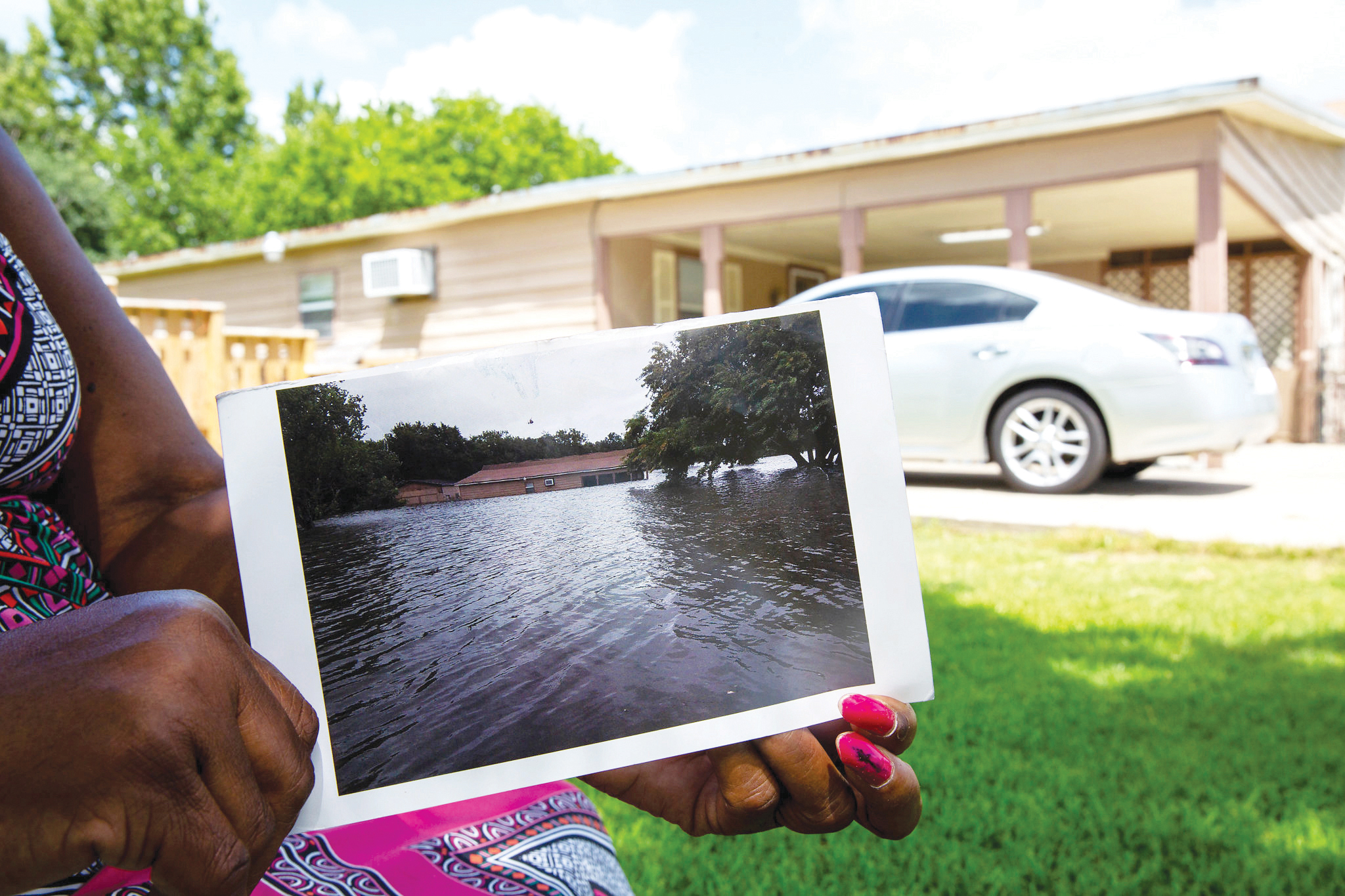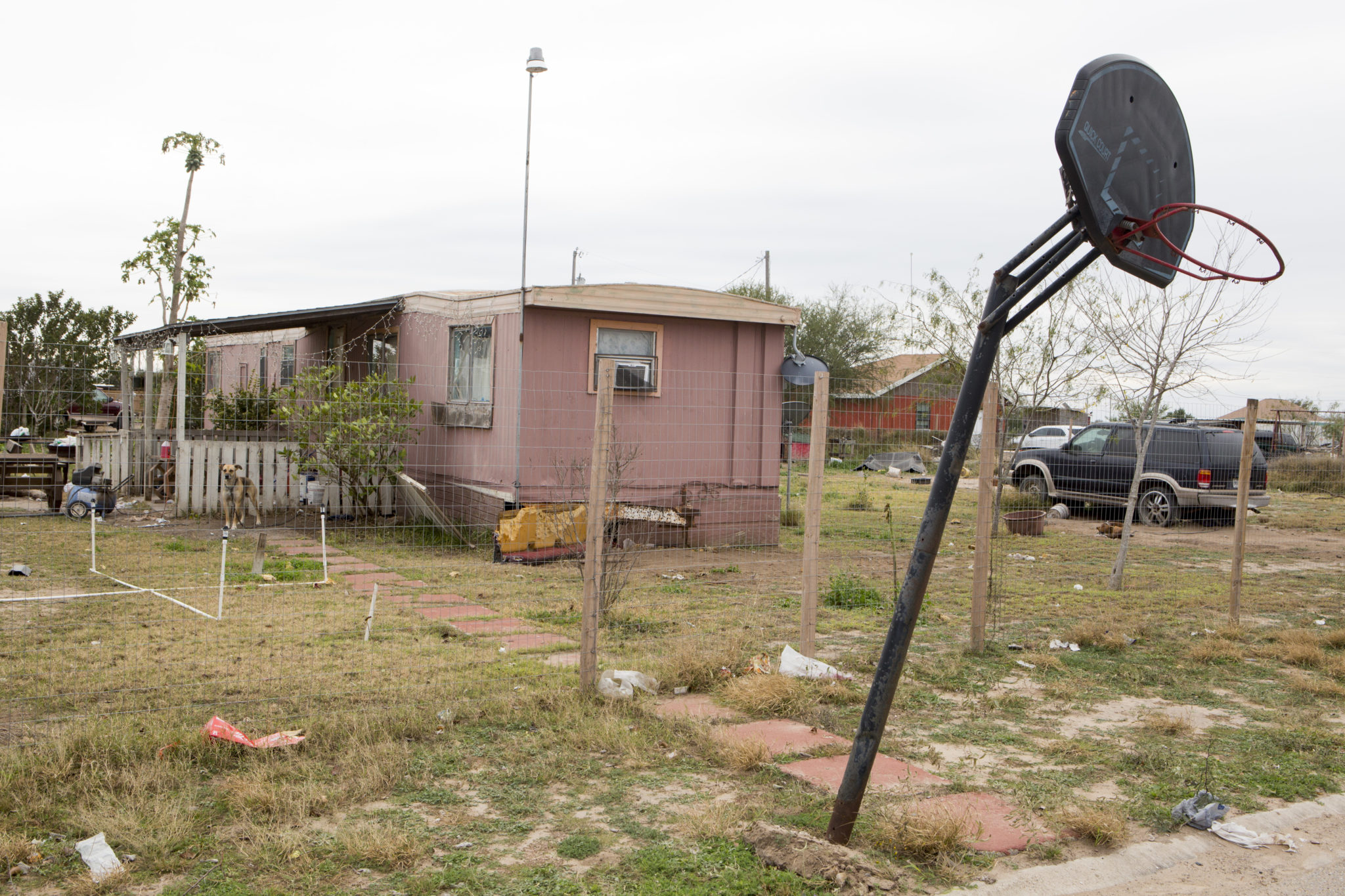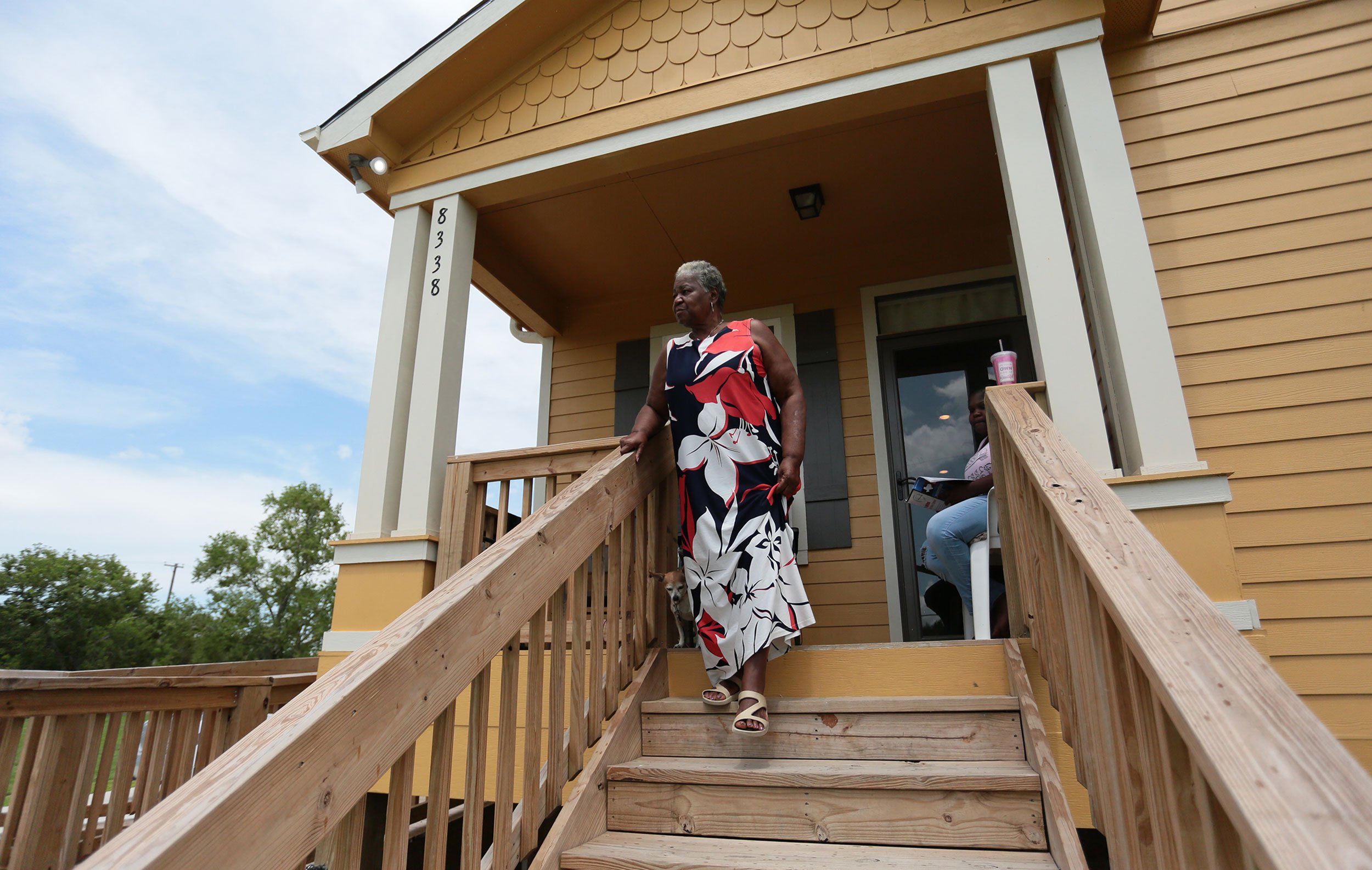
Two Years After Hurricane Harvey, Port Arthur Remains in Disaster Recovery Limbo
The storm-ravaged coastal city is trying to move some people out of harm’s way while begging others to return.
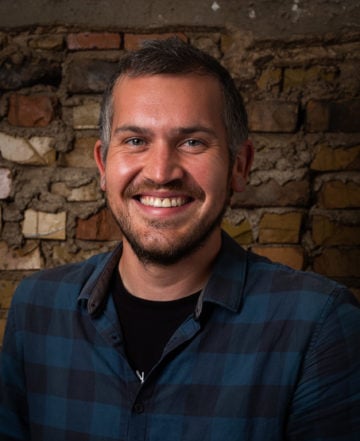
Two years after Hurricane Harvey hit, Beatrice Sanders sat on the raised deck of her new home in Port Arthur, telling me that God had answered her prayers. Last fall, government contractors finally tore down the three-bedroom house Sanders bought with her late husband more than 40 years ago in the city’s Montrose neighborhood, replacing it with a new home—this one perched on stilts six feet above the ground.
I saw Sanders’ old house when I visited the city last year. Multiple storms had pummeled Port Arthur before Harvey—Rita in 2005; Ike in 2008—but Sanders and her family always fixed whatever they could on the house and moved on. Government assistance hadn’t yet come to help repair all the damage left by previous storms by the time Harvey hit in August 2017, turning Sanders’ neighborhood into a lake. Floodwaters touched the ceiling and took a week to recede, transforming the house into a rotting, uninhabitable shell Sanders couldn’t afford to rebuild.
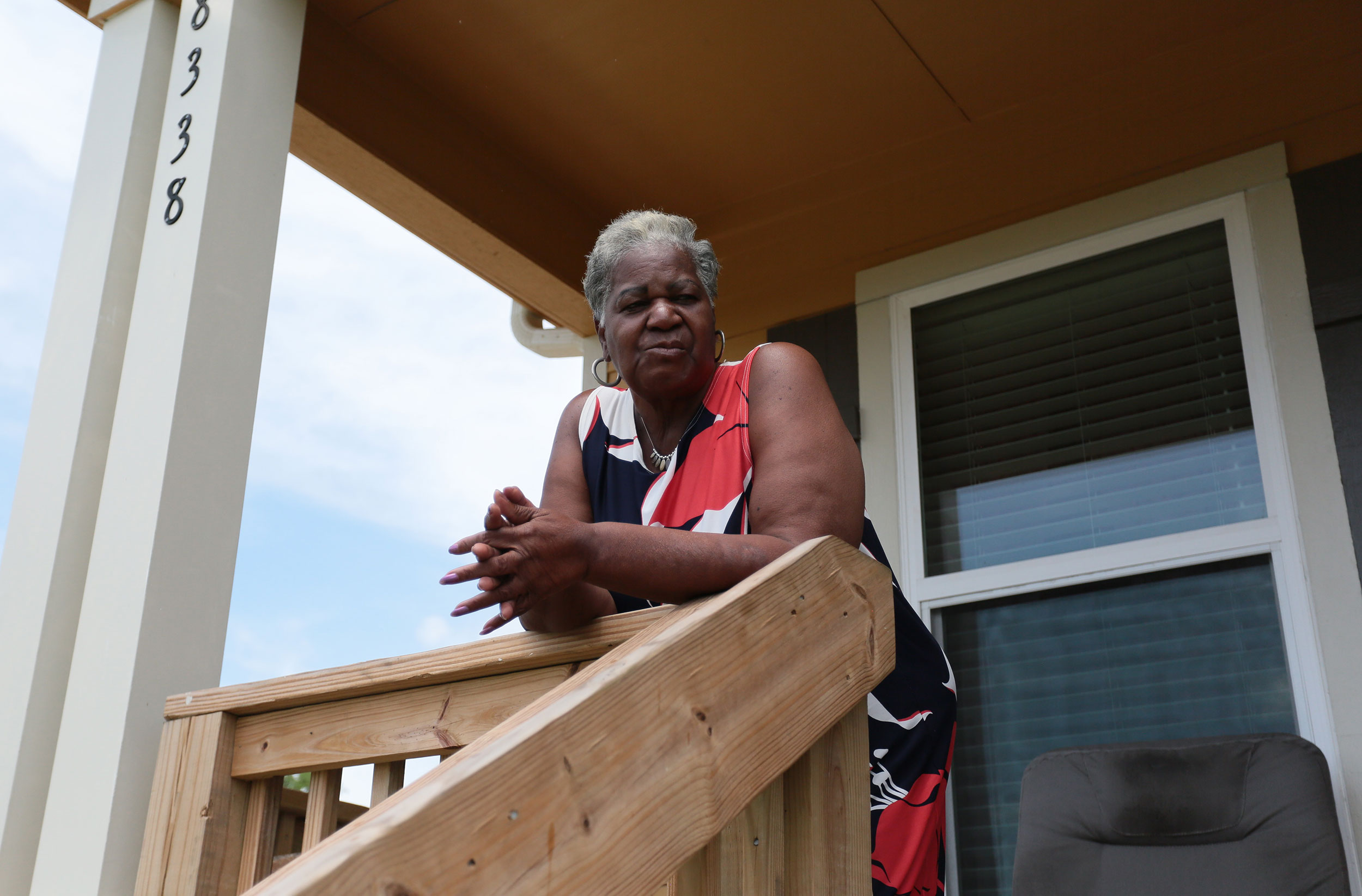
More than a year after the storm—and months after the Texas Observer wrote about Sanders’ ordeal—a disaster recovery program finally funded the construction of her new house.
But officials built Sanders’ home in a neighborhood that could soon disappear. Rather than fix the overloaded drainage and deteriorating streets that surround her, city officials last month identified Montrose as a site for a government buyout program aimed at moving people out of areas repeatedly damaged by storms. As we sat on Sanders’ new deck, she told me she struggled with the idea of leaving the community she’s lived in since she was a child. “I could keep living here,” she mused, “in a beautiful new home in an abandoned neighborhood.”
–
Sanders isn’t the only Port Arthur resident still stuck in disaster recovery limbo. Recovery has been slow in part due to the scope of the storm; officials estimate Harvey affected nearly everyone in Port Arthur, damaging or destroying an estimated 80 percent of housing in the city. But Harvey also exacerbated existing problems in Port Arthur, like high poverty and neglected infrastructure, while worsening damage that hadn’t been fixed after previous hurricanes.
Disaster recovery programs often take years to allocate funds. Consequently, homeowners who can afford to make repairs and wait for reimbursement see their lives rebound more quickly. But even after Congress approves a big disaster relief package, the state distributes the funds in a way that critics say undercounts the poorest people harmed by the storm, shortchanging low-income communities by tens of millions of dollars in assistance.
One truism of disaster recovery is that there’s never enough money—and that is particularly the case for low-income, storm-ravaged communities like Port Arthur.
After Harvey, the state’s first housing-recovery plan prioritized property buyouts in Harris County—which encompasses Houston, the fourth-largest city in America—and rebuilding in the tourist-heavy Coastal Bend. Port Arthur didn’t get a cent. Once the billions Congress allocated for disaster recovery programs started trickling down to the regional level, Southeast Texas officials allocated the funding in a way that disproportionately benefited towns with whiter, more affluent residents. One truism of disaster recovery is that there’s never enough money—and that is particularly the case for low-income, storm-ravaged communities like Port Arthur.
The city is also dealing with a more existential question. Officials have been begging former residents displaced by Harvey to return, because if the city’s population dips below 50,000, it could become ineligible for certain federal grants. It’s been a tough sell for a city that faced high unemployment, industrial pollution, and a dwindling population even before the storm. According to the 2010 Census, Port Arthur’s population fell by 4,000 over the previous decade to a total of 54,000 residents. Many fear Harvey has accelerated the decline.
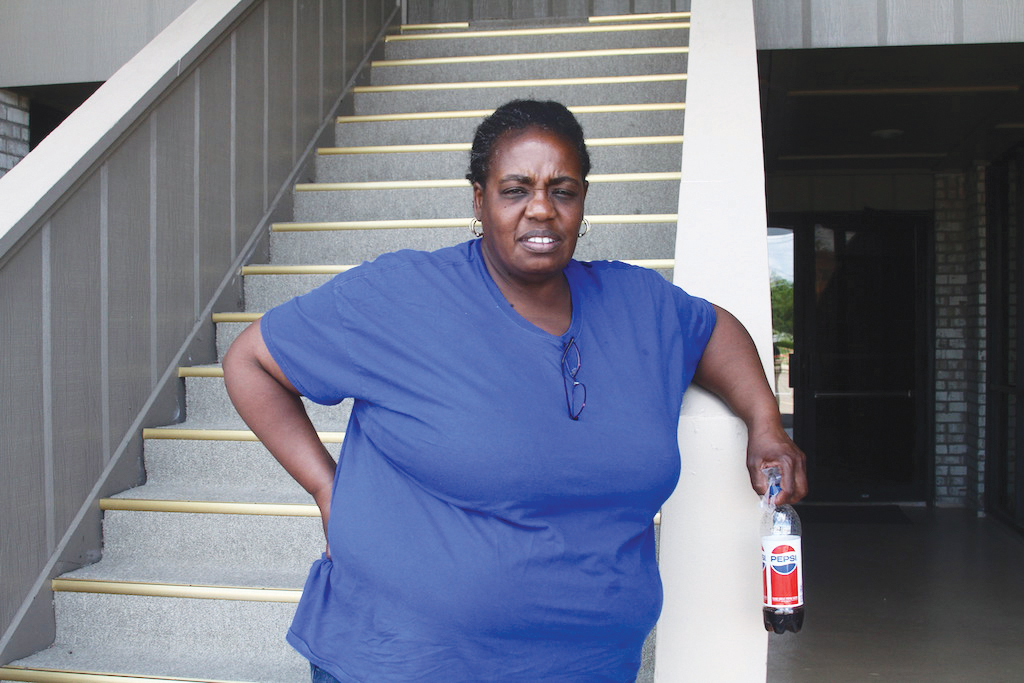
Janice Rogers, who grew up in Port Arthur, doesn’t plan on moving back, even though she’s struggled to hold down an apartment and job since evacuating to Dallas during Harvey. Rogers fled her flooded apartment building on Port Arthur’s west side, part of a public housing complex located near the city’s chemical-spewing refineries. Not long before Harvey hit, an industrial fire had smoldered in the area for months, blowing foul-smelling smoke that triggered a rash of health complaints in Rogers’ neighborhood. Port Arthur’s recovery plans do not include demolishing and relocating the disaster-prone, refinery-adjacent apartments.
When I asked Rogers if she missed anything about her life in Port Arthur, she talked about family, friends, her old church, and going out on the occasional Saturday for someone’s birthday. She recently visited her former city and thought it looked bleak. Other people she knows back home are planning to leave. “People are tired of running from hurricanes,” she said.
–
Sanders’ new government-funded house, built in an area the government now wants to turn into green space, speaks to the confusion endemic to a disaster recovery process that seems to change with every storm. In a presentation to Port Arthur’s city council last month, a city staffer said that years of storms had caused “severe repetitive loss” in Sanders’ community. Yet funding for the buyout program, one of the state’s primary long-term recovery strategies designed to move people out of harm’s way, was so tight that city staff initially only considered including a small corner of the neighborhood, which would have excluded Sanders and most of the people who live around her. Sanders and several of her neighbors wondered why Montrose had been excluded from separate plans to upgrade the city’s streets and drainage system—they had no clue their community was being considered for a buyout.
City officials say they plan to soon host a meeting in Sanders’ neighborhood to answer questions about the program. While they’re still determining how the buyouts would work, current funding for Port Arthur’s program, $4.1 million of the $52.7 million in federal grant funding that Southeast Texas received for buyouts, certainly couldn’t cover the costs associated with moving everyone in the affected area out of harm’s way.
“People are tired of running from hurricanes.”
The city says it’s looking for other funding and incentives, like assistance for down payments or relocation costs, to ease the burden for targeted homeowners, but many in Montrose are retired, on a fixed income, and cringe at the thought of taking on a new mortgage. The overwhelming fear I heard in the neighborhood is that they’ll be pushed out with little compensation. Two years after Harvey, the circumstances vary for people who live there: Some have fixed their homes and moved back or, like Sanders, have had entire houses rebuilt in the neighborhood, while others have struggled to fund repairs and moved in with family because their homes are still unlivable.
A buyout might be the only option for people like Henry Wilson, 70, who grew up in Montrose, left for many years, and then, when he returned in early 2017, had the misfortune of buying a small house in the neighborhood months before Harvey flooded it. Wilson says that after the storm, he spent most of the past two years living in a small trailer on his property, next to a vacant house that he can’t repair. He gets nostalgic talking about how the neighborhood, which is now sparsely populated, used to have stores and clubs and even a gym. “I’m stuck,” he said while showing me around his property. “I don’t want to leave, but what if that’s the only option they’re giving me? Where am I supposed to go?”
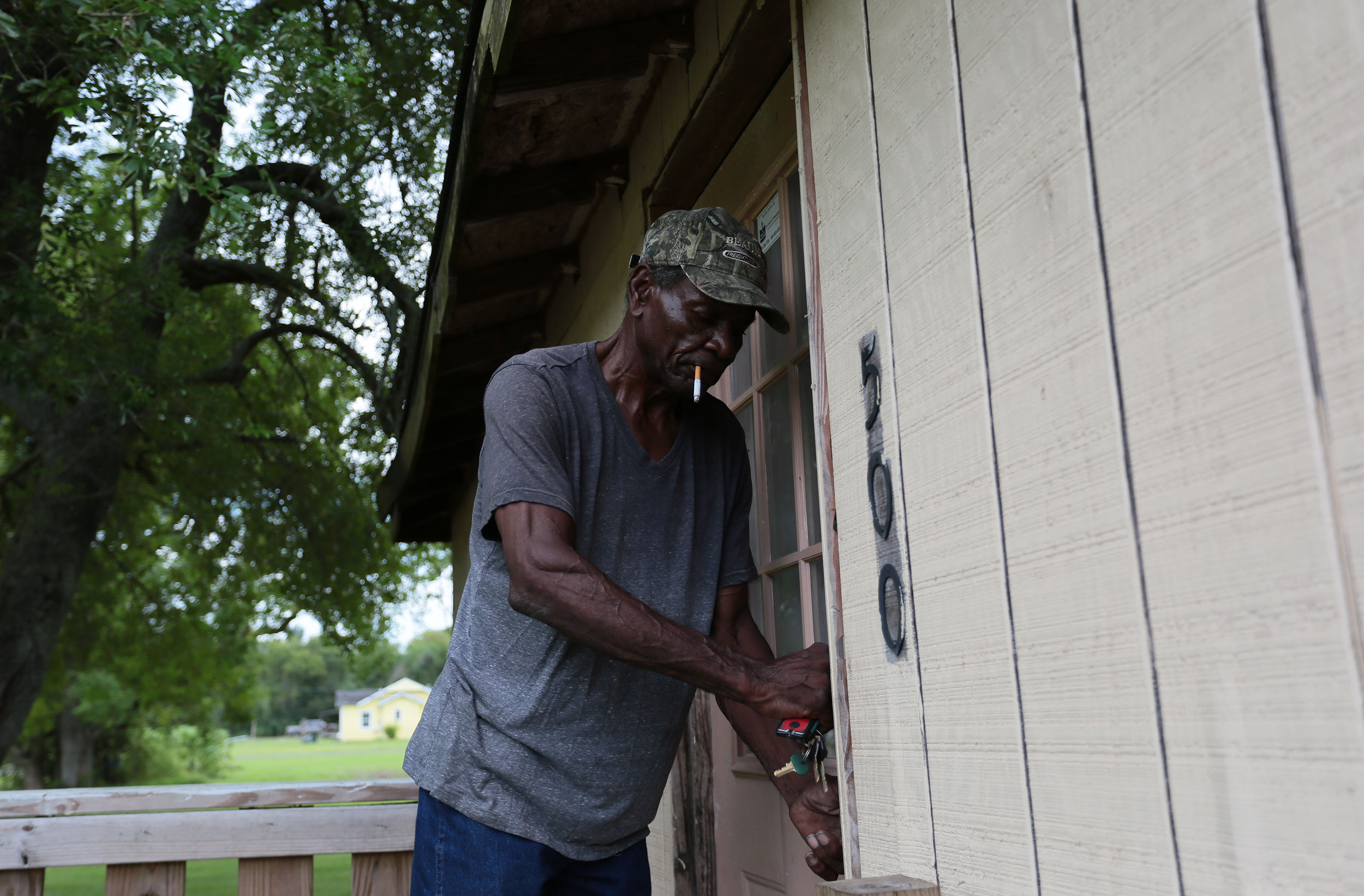
City inspectors told him he had to elevate his home to make it habitable. After trying and failing to get government assistance and the city permits he needs to repair the house, he asked a friend who lives nearby to help him jack up the house by three feet. Wilson then helped the friend repair his flood-damaged home.
Read more from the Observer:
-
She’s 28. She’s an Immigrant. She’s in Charge of Texas’ Most Populous County. Get Used to It: When Lina Hidalgo was elected Harris County judge in November, many scoffed at her unexpected victory. Now she’s on a mission to prove that her progressive agenda is just what Houston needs.
-
Floodplain Maps Are Outdated. This Scientist Wants to Change That: More than half of FEMA’s flood maps rely on decades-old data. Now, a group of Texas researchers is tackling the problem with a $3 million grant and crowdsourced data.
-
More Highways, More Problems: Highway expansion is the Lone Star State’s status-quo solution to easing traffic—but it actually leads to more congestion and displaced communities.

